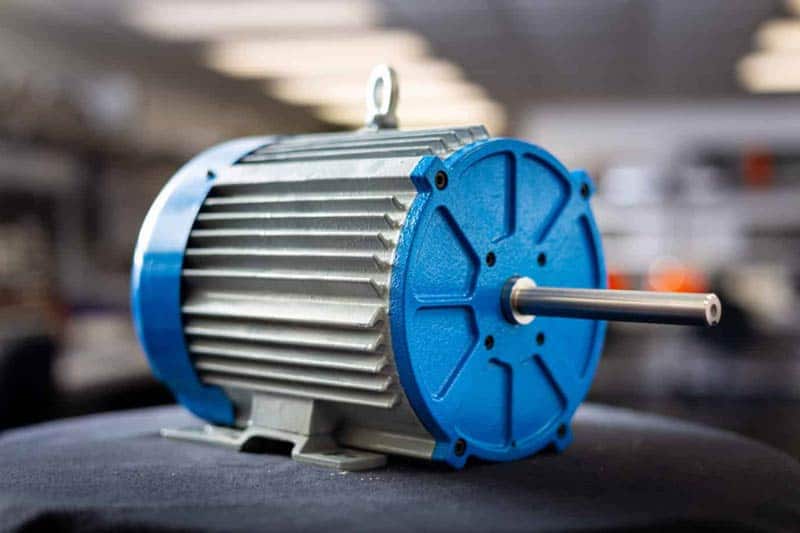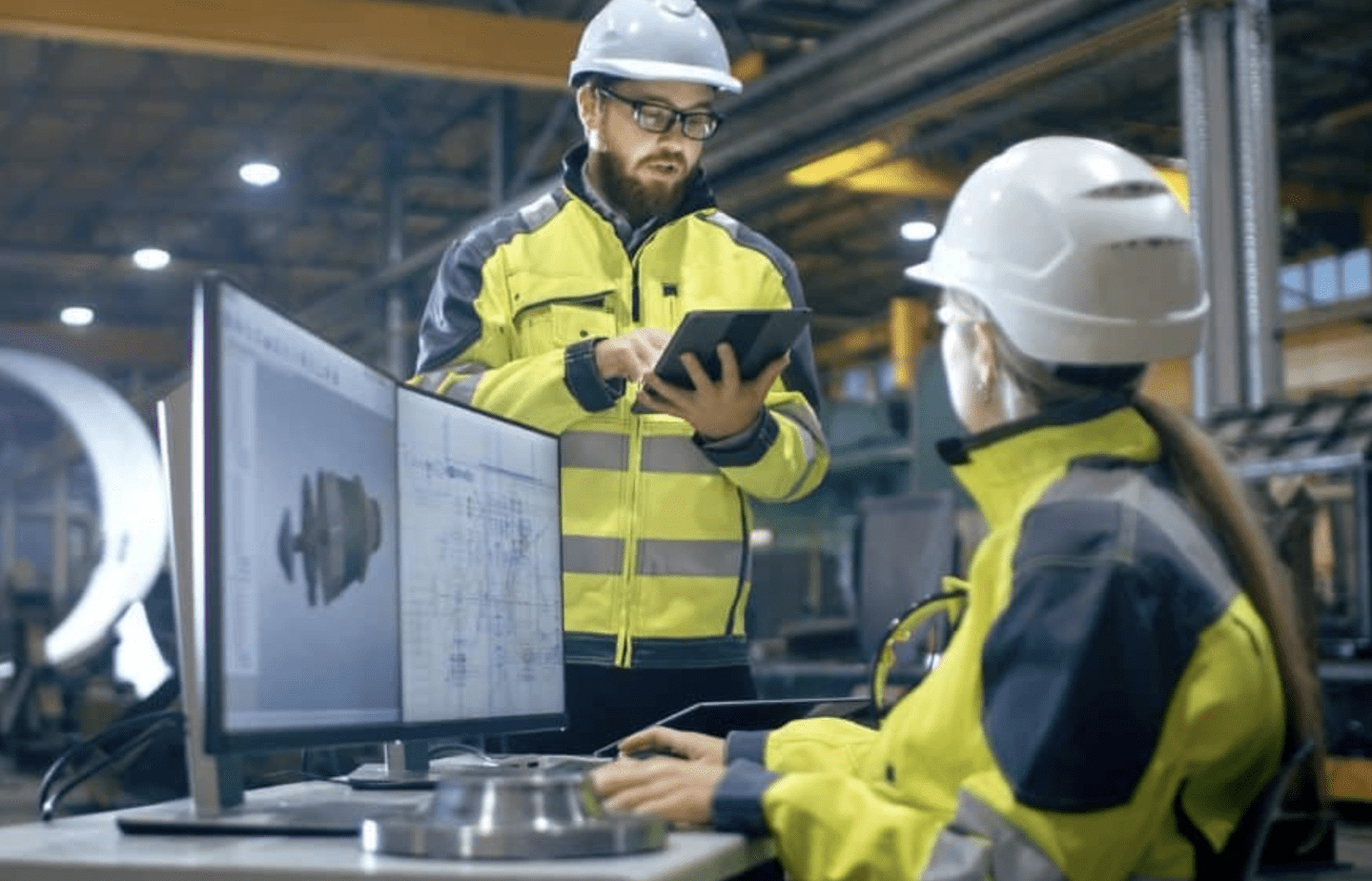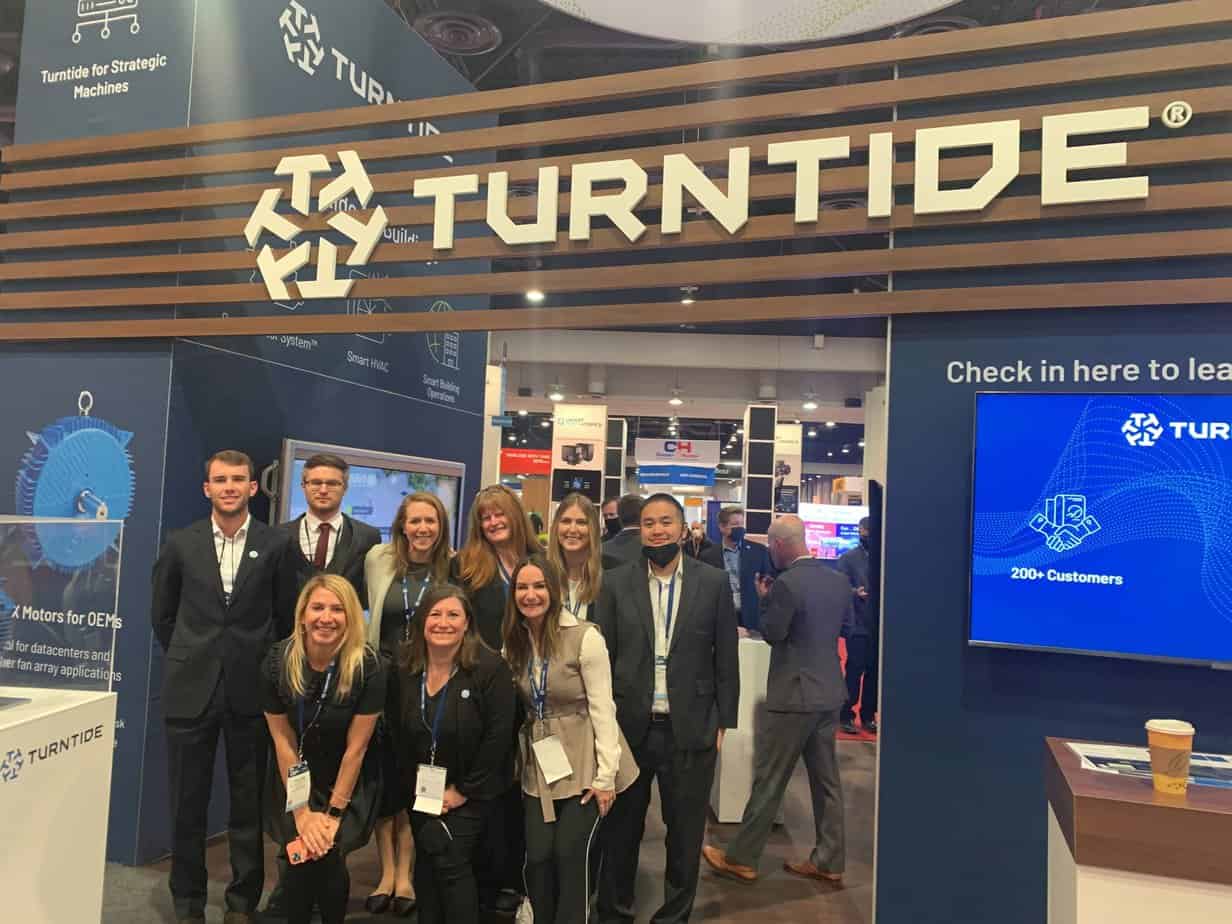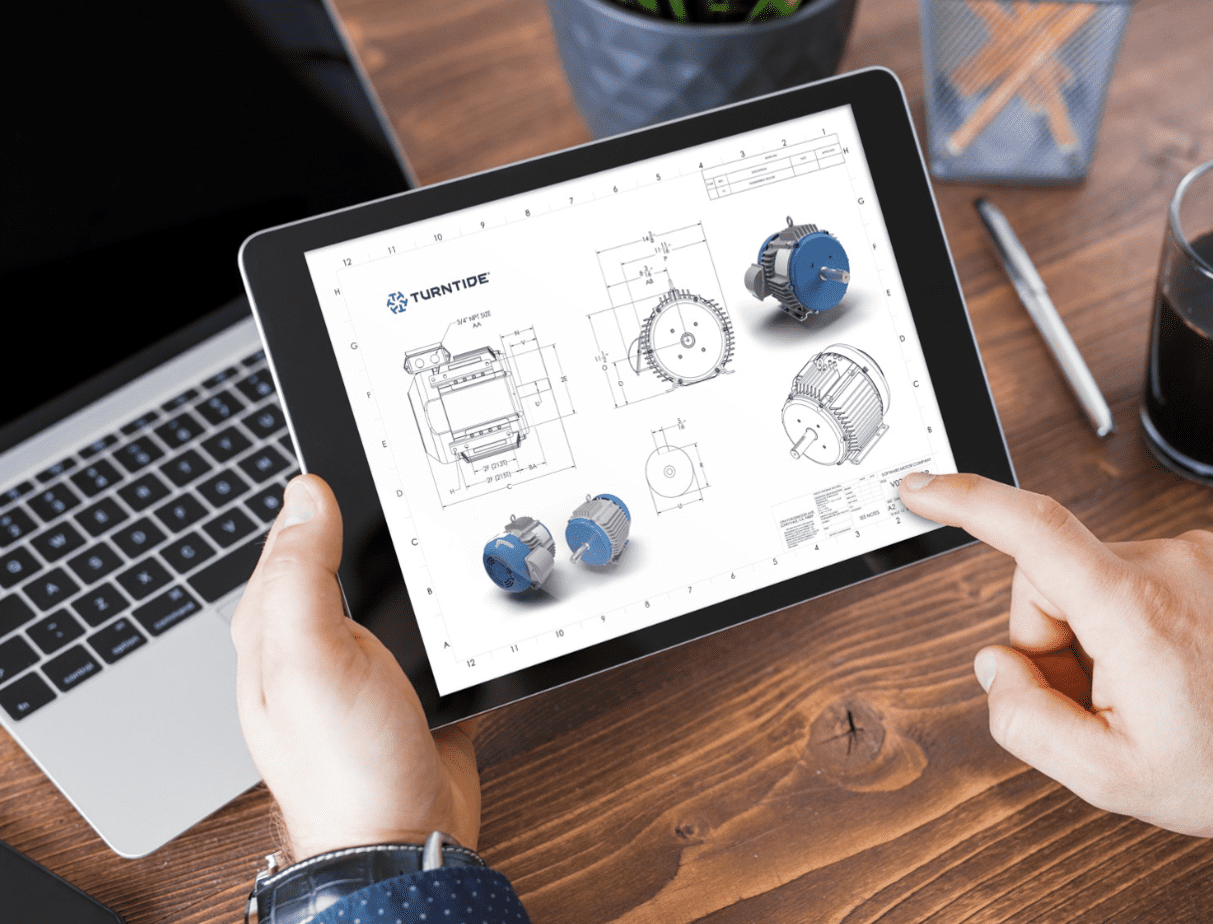Andy Sumner
Episode Summary
The age of cheap fossil fuels has come to an end. Since the beginning of 2021, the prices of natural gas, crude oil, and diesel have skyrocketed, driven largely by supply chain issues exacerbated by the pandemic and Russia’s invasion of Ukraine.
As a result, wholesale electricity costs have spiked more than 400% in many countries since the beginning of 2021. While electricity prices have dipped slightly in recent months, to merely 200-300% higher, many of these same countries are now transitioning away from Russian fossil fuels at an urgent pace, which will keep supplies tight and prices high for the foreseeable future.
According to Andy Sumner, Commercial Director of Future Motors, this reality leaves businesses with only two options: improve their energy efficiency or reduce their operations. One of these provides immediate ROI and would insulate their business from price volatility. The other equates to rolling the dice and hoping that your business can survive an energy crunch that promises to extend well into the future.
In this episode of Net Zero Action Heroes, Andy explains how surging energy costs are impacting businesses, why HVAC motors have replaced LEDs as the best energy efficiency upgrade, and how forward-thinking companies like Wilko are turning sustainability into a competitive advantage.

Before joining Future Motors, Andy worked in a variety of industries, focusing on businesses and industries that could make a positive impact on our shared planet. Most recently, he was Chief Commercial Officer at JPIMedia for four years.
Key Insights
Not enough is being done on the demand side of the emerging energy crisis. While the causes are well documented, the proposed solutions to our current energy crisis almost always leave out the most important and proactive step that companies can take to protect their business: improved energy efficiency. “We’re all about the demand side of the equation, so supply and demand. A lot of people are focused on supply. We’re entirely focused on demand. And the fact of the matter is, for many organizations, there aren’t a lot of choices out there in terms of reducing your energy demand.”
The LED revolution only addressed a small part of the Built Environment’s energy consumption. LED lighting has become so successful that soon it won’t really be an energy efficiency measure at all — it will be the standard. But lighting only accounts for 17% of energy usage in buildings. Most energy consumption actually comes from HVAC. “If you look back historically, most organizations have moved into LED lighting because it was a very simple retrofit solution and typically the payback was two years or less, which met most corporate guidelines. With energy inflation, solutions like ours all of a sudden have the same criteria. The only difference is that electric motors consume two and a half times more electricity in a building than lighting ever did.”
Forward-thinking companies are using sustainability as a competitive advantage. Unlike in decades past, where saving the planet came at the expense of profits, sustainability has become a good business decision for many brands. “Take Wilko, who partnered with us and is now saving a stunning 60% on their electricity costs. But it’s about more than saving money. Their customers care about the environment, and they want to buy stuff from businesses who care. That mindset is just going to accelerate, and forward-thinking companies like Wilko are giving themselves a competitive advantage by undertaking projects like this.”
Episode Highlights
[8:35] Energy prices are likely to go significantly higher over the next 10 years. We’ll be dealing with this for the next decade. This increase actually reduces the payback period on energy efficiency upgrades
[1:45] If you look at the standard building, somewhere between 40 and 80% of electricity consumption goes to its heating and ventilation system just to move air through the building. That’s a huge opportunity for buildings to capture savings.
[13:14] If today’s energy-efficient motors had been available at the beginning of the LED revolution, they would’ve been prioritized over lighting. With most LED projects now out of the way, motors are the next low-hanging fruit.
Transcript
[00:00:10] Chris Pullam: Hello and welcome to Net Zero Action Heroes. I’m Chris Pullum, and this episode is brought to you by Turntide Technologies, an award-winning sustainability company. Today, our guest is Andy Sumner, the Commercial Director of Future Motors. Andy, thanks for joining me.
[00:00:28] Andy Sumner: You’re welcome. It’s a pleasure. Thanks, Chris.
[00:00:35] Chris Pullam: So, I was hoping that you could start off by explaining what Future Motors does, and you know, why that’s important in today’s climate?
[00:00:50] Andy Sumner: Well, Future Motors is a business that sells and installs and manages installations for corporate businesses, and we sell exclusively Turntide products. So, particularly, Turntide building products. And the reason why it’s important is very simple. It’s that Turntide has come up with really smart motors that save a significant amount of energy, money, and carbon for corporate businesses.
[00:01:25] And there’s a very simple path to implement them. And so, for me, it’s a really, really exciting and interesting business because we built the opportunity to make a real difference.
[00:01:41] Chris Pullam: You said it both saves money for businesses, but also reduces energy consumption, so there’s both a savings element and a climate element to it, as well. Is that correct?
[00:01:51] Andy Sumner: Yeah. That’s exactly correct, and they’re symbiotic rather than being mutually exclusive, which perhaps might’ve been the case in the past.
So, if you have a standard building, say an office building, in a city, if you look at the energy it consumes, somewhere between 40% and 80% of the electricity that that building consumes is consumed by their heating and ventilation system to move air around the building.
[00:02:25] That’s not necessarily even to heat or cool it, but to move it around, because you can imagine that physically moving large volumes of air around a building takes a lot of energy. And so, the Turntide motors drive air conditioning units to move air around buildings in order to keep people warm and cool in order to ensure that buildings have the right air quality.
[00:02:46] So, it sort of makes sense to me that there’s somewhere between 40% and 80% of the building’s electricity is consumed by these motors, and we have, between Future Motors and Turntide, we have a technology that can materially reduce the consumption of those motors. Well, actually, this makes a huge difference.
[00:03:01] And so that was really interesting. And what’s, I guess, even more interesting is that was the theory. I was told that Turntide motors will save between 30% and 70% of electricity. That sounds great. And actually, in practice, it turns out to be true.
It’s genuinely quite an extraordinary thing. Not a particularly sexy thing. Not a thing that a lot of people know about. It’s certainly not one that makes the headlines. But, nonetheless, it’s a piece of technology that makes a very, very significant impact on energy consumption and carbon savings.
[00:3:41] Chris Pullam: So you’re retrofitting the motors that currently exist in buildings, correct?
[00:03:50] Andy Sumner: That’s correct.
[00:03:51] Chris Pullam: So, can you kind of walk me through what is the difference between today’s high energy-efficient motors they can go in these buildings and what’s already in those building?
[00:04:01] Andy Sumner: Yeah. So, it’s really quite simple. Motor technology, electric motor technology, which is what we’re talking about has broadly not changed for a hundred or so years. There’s been marginal improvements, marginal gains in the efficiency of those motors, but they are about as efficient as they can possibly get because of the inherent limitations of the design.
They’re called induction motors. The Turntide proposition is something called a switched reluctance motor, which is a completely different design to the induction motor, and it’s software-controlled.
[00:04: 22] So, it uses incredibly clever software with algorithms to very precisely control the power that goes into that motor to maximize its efficiency. That’s sort of it, in a nutshell. I’m probably doing our technical guide a massive disservice, but in summary, it’s a really clever motor that is designed to be as efficient as possible.
[00:04:36] So, the inherent design of the motor is that it is replacing motors that are inefficient, and they can probably get through their design limitations with a completely different design. What’s also important, of course, is if you’re going to make a difference and make a difference quickly, you need to make sure that you can replace the old with the new, and one of the really interesting things about the Turntide proposition is that for most motors that are in situ, in buildings, it is a simple replacement.
[00:05:01] In effect, it’s as simple as unbolting the old motor, bolting the new motor in the same footprint as the existing motor, hooking it up to the fan, and away you go.
[00:05:18] And what that means is that it is much less capital-intense than handling units in their entirety, which other technologies try to do. This is just much simpler, much quicker, significantly less disruptive to buildings, and overall a more elegant, in my opinion, proposition than any alternatives that are out there.
[00:5:38] Chris Pullam: You’re in Europe, so what markets within Europe do you work out of?
[00:5:46] Andy Sumner: So, at the moment, we are in the UK, which is the most established market, and we’re in Spain, Italy, and the Republic of Ireland, and we are looking to expand across other geographies in Europe. Ultimately, we’re about making a difference. We’re about making a difference to the environment by convincing as many people as we can to adopt a technology that dramatically reduces the consumption of electricity.
[00:6:14] We’re all about the demand side of the equation, so supply and demand. A lot of people are focused on supply. We’re entirely focused on demand. And the fact of the matter is, for many organizations, there aren’t a lot of choices out there in terms of reducing your energy demand.
[00:6:32] We’re one of the few that actually can apply to pretty much any business, and most businesses can benefit significantly from our proposition. And if we can make a difference for an organization, everybody in our organization is passionate about making that difference.
[00:6:52] In order to make a real difference, we’ve got to expand rapidly, and we’ve got to ensure that we get the maximum level of adoption that we can. The only way we’re going to do that is by, as I said earlier, ensuring people have a quality experience, ensuring they get the outcomes that they deserve, and building an organization that can put their foot down on the accelerator very quickly to expand rapidly. That’s our ambition.
[00:7:11] Chris Pullam: Like you said earlier in the conversation, if we’re going to solve this climate problem, we have to attack it from so many different directions. One of the things that I think is most unique and powerful about your proposition is that, yes, it could save the planet, but you’re doing it in a way that businesses will save money at the same time, and that’s going to motivate them to be so much more interested in getting involved.
[00:7:42] And that’s going to unlock so many more opportunities. I have some stats here for you. So, in Europe, specifically, since the beginning of 2021, wholesale electricity costs have spiked by more than 400% in many European Union countries. Against that backdrop, how important is this?
[00:8:03] Andy Sumner: Well, it’s hugely important. They say that in life and comedy, timing is everything, and the timing really is acting in our favor. If you look at the numbers, the 400% increase in wholesale price is true. Wholesale prices are not what business consumers pay, so their pricing hasn’t gone up 400%.
[00:8:23] But it has gone up, and we’ve seen, depending on which customer, between a 100% and 200% jump in pricing over the last few months. Genuinely, it is completely unprecedented. Never in my career across multiple industries have I seen such a significant cost line in any business go up that much in that short of a period of time. Pretty interesting, as well, is that the analysts think that these prices are here not just because of short-term issues like the COVID crisis or, indeed, the war in Ukraine.
[00:8:42] Their underlying position is that they’re likely to stay significantly higher and then go very significantly higher than they were over the last few years for the next 10 years. This is here for the next decade, right? For many businesses and for a whole bunch of other reasons, that is incredibly bad news, right?
[00:9:01] Incredibly bad news. So, the small crumb of comfort with energy price inflation for organizations is it makes the payback period, the time it takes for you to get your money back when you’ve made that investment, come down significantly.
[00:9:18] If you look back historically, most organizations have moved into LED lighting because it was a very simple retrofit solution and typically the payback was two years or less, which met most corporate guidelines.
[00:9:30] With energy inflation, solutions like ours all of a sudden have the same criteria. So, typically, the payback period for our solution will be two years or less, sometimes a lot less, sometimes a little more, depending on the customer environment, but in the same ballpark as LEDs.
[00:9:45] The only difference is that electric motors consume two and a half times more electricity in a building than lighting ever did. So, actually, and you’d expect me to say this, of course, I’m going to say this, but the next logical thing for most organizations to do is say, “Right, the lowest hanging fruit was LED. Now, we’ve got another equally lower hanging fruit, which is the electric motors in HVAC, in our buildings. Right? Let’s do that.” And then, after that, you can start going after the more difficult bits with a longer payback, and the list is going to be long for organizations.
[00:10:20] Chris Pullam: That was a lot of great stuff, a lot of stuff that I want to touch on. One thing that I first and foremost want to drill down into though is, you mentioned a little bit about Russia’s invasion of Ukraine. Obviously, that’s just terrible geopolitically and ethically, but it will have a huge impact on energy prices. But it’s also important, I think, to put it in perspective in the sense that, I mentioned that the huge spike in energy wholesale electricity prices earlier, but actually the biggest spike came a couple of weeks before the invasion of Ukraine, and so obviously the prices weren’t caused solely by the invasion. The biggest spike came before the invasion. It came more than a year after COVID became a thing that was really impacting the world.
[00:11:17] So, it’s not like just these major events are impacting energy prices. They’re not helping the situation, and they’re probably adding to how long this is going to be impacting the world, but it’s not like we can just wait for these terrible things to be over and we’ll go back to normal.
[00:11:30] Like you said, these things are here to stay.
[00:11:32] Andy Sumner: Absolutely. Yeah. And there’s a whole bunch of reasons, you know, demand in China, nuclear power plants being switched off in Germany, and especially the Ukraine crisis. Which, I’m a European. I’ve lived in Europe all my life. My grandfather fought in the Second World War against fascism.
[00:11:46] I thought that all this stuff was behind us, and it is almost inconceivable to me what’s happening in Ukraine with potentially a totalitarian state flexing its muscles in the same way that happened many years ago. We thought that sort of thing has been confined to the annals of history. But hey, it’s back again.
[00:12:00] And one of the ways that Russia has paid for the war is by effectively holding Europe ransom on the supply of energy, which keeps our world going. It supplies industry, keeps us warm at home, allows me to be on this recording with you, et cetera.
[00:12:12 And one of the things I noticed is that there’s been a lot of talk about how Europe can wean itself off Russian gas and oil, and that’s primarily by looking to procure it from the Middle East or from the US or elsewhere, but not enough, in my opinion, on looking at demand side.
[00:12:39] Chris Pullam: Well, you compared the motor to LEDs earlier, which I thought was a really striking comparison because everyone knows about the energy-saving abilities of LEDs. Hopefully these motors get to that point going forward. My question for you is, if a company has already revamped their lighting and they don’t go the motor route, is there a viable alternative to capture more savings right now, or is really the motor the next option?
[00:13:02] Andy Sumner: Yeah, well, there’s always things you can do around the edges. So, there are lots of different technologies that you can utilize to reduce consumption. None of them have the same impact as driving air through a building.
[00:13:19] Actually, if our proposition had been available at the beginning of the LED revolution, you should still have done ours first because lighting, while it is a big consumer of electricity, moving air around a building consumes two, two and a half times more electricity than lighting. So, you tackle the big things first if there’s a solution for it. Now, the reason why nobody tackled that 5, 10 years ago is because there wasn’t a solution. Now there is.
[00:13:39] Chris Pullam: So, then, I mean, obviously, this seems like a great proposition. The one thing that we always hear in the US media for anything that’s related to climate tech or sustainability, it seems like a lot of this technology is held up by supply chain issues. So, Future Motors, are you impacted by supply chain?
[00:13:57] Andy Sumner: The answer is yes and no. Mostly no, and a little bit yes. So, supply chain issues are broadly around a number of things, but specifically around microelectronics, and we buy microelectronics from the same market that BMW does and everybody else does.
[00:14:11] And we know that there’s a global dearth. One of the things that we, and I’d like to say that this was incredible foresight, or a mystic ability to see the future, but to be honest, it was more luck than judgment, is that we predicted a very high level of demand for these motors and opened up a new warehouse in the UK, and we decided that we would order a very large amount of stock.
[00:14:32] So, we’re in a fairly unique position in that if you want to buy electric motors, and there are a couple of other efficient electric motors out there, different technologies from induction motors, not as efficient as ours, but arguably inferior for a whole bunch of reasons, but if you wanted to buy them, you’re going to have to wait a year or two because the supply chain issue has impacted them significantly.
[00:15:01] We’re in a fortunate position to have a very big warehouse that’s full of them, and we’ve forward-ordered stuff, so we’ve got more motors arriving in June and September and December. So, I think we can be reasonably confident that, certainly for the next year or so, we’re going to be able to meet demand.
[00:15:21] Chris Pullam: And on that note, I saw in the news recently that Future Motors and Wilko, which is a huge retail chain in the UK, you won the Low Carbon Achievement Award at the H&V News Awards 2021. Could you walk me through that project and what went into that award?
[00:15:42] Andy Sumner: Yeah, so Wilko is a really interesting business. I’m a keen shopper there myself. It’s a = business that provides a lot of essential products, from hardware to domestic products, and they sell to hardworking people.
[00:16:01] So it’s a very, very price conscious brand, and they are very clear that they want to deliver the best possible value to their customers. Wilko had transitioned to LEDs, and they were keen to do a couple of things.
[00:16:25] First, they’ve got a very forward-thinking position on sustainability, and secondly, they believe in driving as much cost out of their business as they can in order to deliver the best possible value to their customers as possible. So, we engaged with them, we ran a pilot, we showed 40% savings on their pilot, and then we rolled out to 400 stores across the UK, so 800 motors or so, a large rollout.
[00:17:56] And what’s really interesting, what’s really clever, was that they took the savings and they reinvested those savings into a new building management system, which helped them control their new motors and drive down that savings even further.
[00:17:20] So, the 40% savings they got just from the motor replacement was all enhanced by a further 20% savings that they got from being smarter about the way they manage their business using technology to drive down the consumption.
[00:17:41 It was a really, really interesting project for us. And I think it was the fact that our technology delivered significant savings, but also the intelligent way that Wilko went about this project to say, “Okay, well, if we want to make an investment in BMS, how do we pay for that?”
[00:18:01] Well, let’s pay for it by saving money in our electric motors, and as a consequence, the overall result has been a stunning 60% savings on their HVAC electricity costs. It is quite extraordinary.
[00:18:20] Chris Pullum: I think any business would be thrilled to cut electricity consumption by more than 50%. That’s a huge improvement.
[00:18:27] Andy Sumner: Yeah. It is. It is truly extraordinary, and it does genuinely sound almost too good to be true, but on this occasion, it isn’t.
[00:18:35] Chris Pullum: You also mentioned rolling out 800 motors across 400 locations. Do I have that right?
[00:18:43] Andy Sumner: Yes, that’s right. Yeah.
[00:18:47] Chris Pullam: And you also said, I believe, that there really wasn’t any disruption. How is that possible?
[00:18:53] Andy Sumner: It’s about a couple of things. Firstly, we’ve got some really strong project management resources and we’ve established a really good working relationship with the team at Wilko. Those things matter, right? Getting those teams to work together really, really well genuinely matters.
[00:19:10] The second thing, and I’ll take you back to something I said much earlier on, we should never underestimate the potential for things to go wrong in business and in rollouts, and there are a myriad of examples of where they do, but getting the project management right, we do a lot of quality checks and all that before it goes out of our warehouse to customer sites to make sure that it minimizes the chances of failure. But I’ll take you back to the principle of our proposition, which is it’s a retrofit proposition.
[00:19:33] We unbolt the old one, and we bolt in the new one, and we hook it up to the fan, and that’s a process of two to three hours. So for those stores, the level of being without air moving around their store was only two to three hours, which resulted in a minimal level of disruption.
[00:19:46] Chris Pullam: And then, not to have you speak for Wilko, but they won that award and then got good PR out of it. They got to increase their relationships with the customers who, I’m sure, really wanted Wilko to make a decision or a move that would increase its sustainability.
[00:19:59] What does this sort of improvement, award or no award, mean for them, for their brand, for the reputation?
[00:20:08] Andy Sumner: Their customers care about the environment, and they care about buying stuff from people that also care, and that’s the reality. Lots of people care about the environment and they’re going to make decisions about who they buy stuff from, who they trade with, who they invest with based on what that organization is doing to get to net zero, to contribute to the sustainability agenda. That isn’t going away any time soon. That’s just going to accelerate, and forward-thinking organizations like Wilko will give themselves a competitive advantage by undertaking projects like that.
[00:20:51] Chris Pullam: So, I was hoping to wrap up by learning a little bit more about you. I’m curious, why did you choose a career in sustainability?
[00:20:59] Andy Sumner: Well, I’ll try and keep the answer relatively short. I’ve worked in lots of organizations over the years, and I much prefer working in a business where I make a positive difference, not just to the business, but to society. That sounds rather grand, but if you’re going to go to work every day, if you’re going to put your heart and soul into something, isn’t it better to put your heart into something that matters, that makes a positive difference?
[00:21:22] Now, earlier in my career, I really focused on climbing the greasy pole and making little bit of money, but as I’ve matured, the last three organizations I’ve worked for have really been trying to make a positive difference.
[00:21:39] I was coming from a previous role where I had a very large team and I was joining a startup and to make that decision, to join a much smaller organization with all the risk it entails, there has to be a good reason for you to do that. And the reason that made me do that was that I could see how this could make a real difference and what I did could actually matter.
[00:22:01] Albeit modestly, but it actually matters. And, when you look at yourself in the morning, before you start work, it gives you at least a little bit of comfort that the endeavors that you’re about to embark upon during the day actually matter.
[00:22:21] Chris Pullam: That’s great advice. I like to end these conversations on an optimistic tone. So, my last question for you, since you’ve joined Future Motors, what have you seen that has made you hopeful for the future?
[00:22:32] Andy Sumner: I think there’s been a number of things, but I think if I were to choose, I would say that I’ve sat in board meetings and senior management meetings where topics like sustainability were discussed as obligations or necessary evils that were a distraction from what was really important: making money. I think the one hopeful thing I’m seeing now is that actually, people in business get it.
[00:22:57] It is not quite where it needs to be yet, but it is getting to the top of the agenda, and it’s being done because it matters because people do have a level of altruism in their behavior, and it’s being taken seriously.
[00:23:12] Chris Pullam: Fantastic. That’s great to hear. So, we’re coming up on time. Before I let you go, where can people go to learn more about you?
[00:23:20] Andy Sumner: If you want to learn a bit more about our business and what we do, we have a website, you won’t be surprised to find out, at futuremotors.co.uk. And if you’d like to go to the website and you’d like to talk to us a bit more, then please do. If you don’t, well, then good luck to you.
[00:23:31] Chris Pullam: Well, I highly recommend that everyone who’s listening check you out. So, Andy, thanks again for everything you’re doing to make our world more sustainable. I’m going to let you go, but you’ve been a fantastic addition to Net Zero Action Heroes. It was great chatting with you.
[00:23:42] Andy Sumner: Thanks, Chris. I enjoyed the meeting. Thank you.






